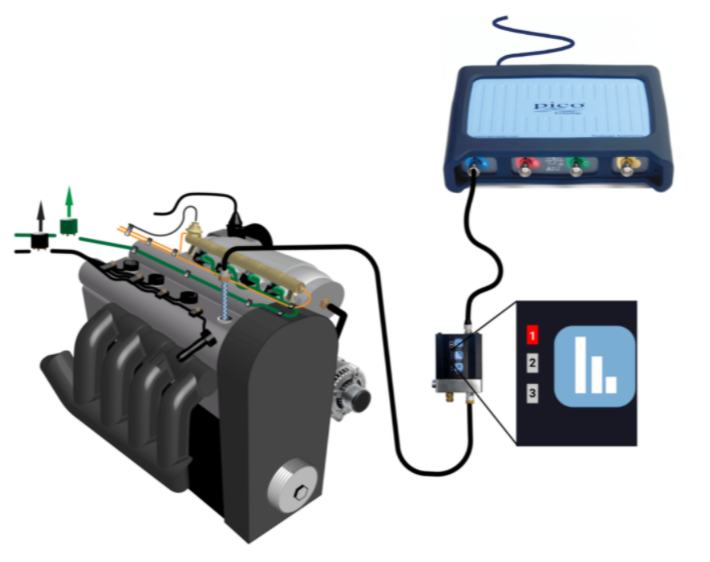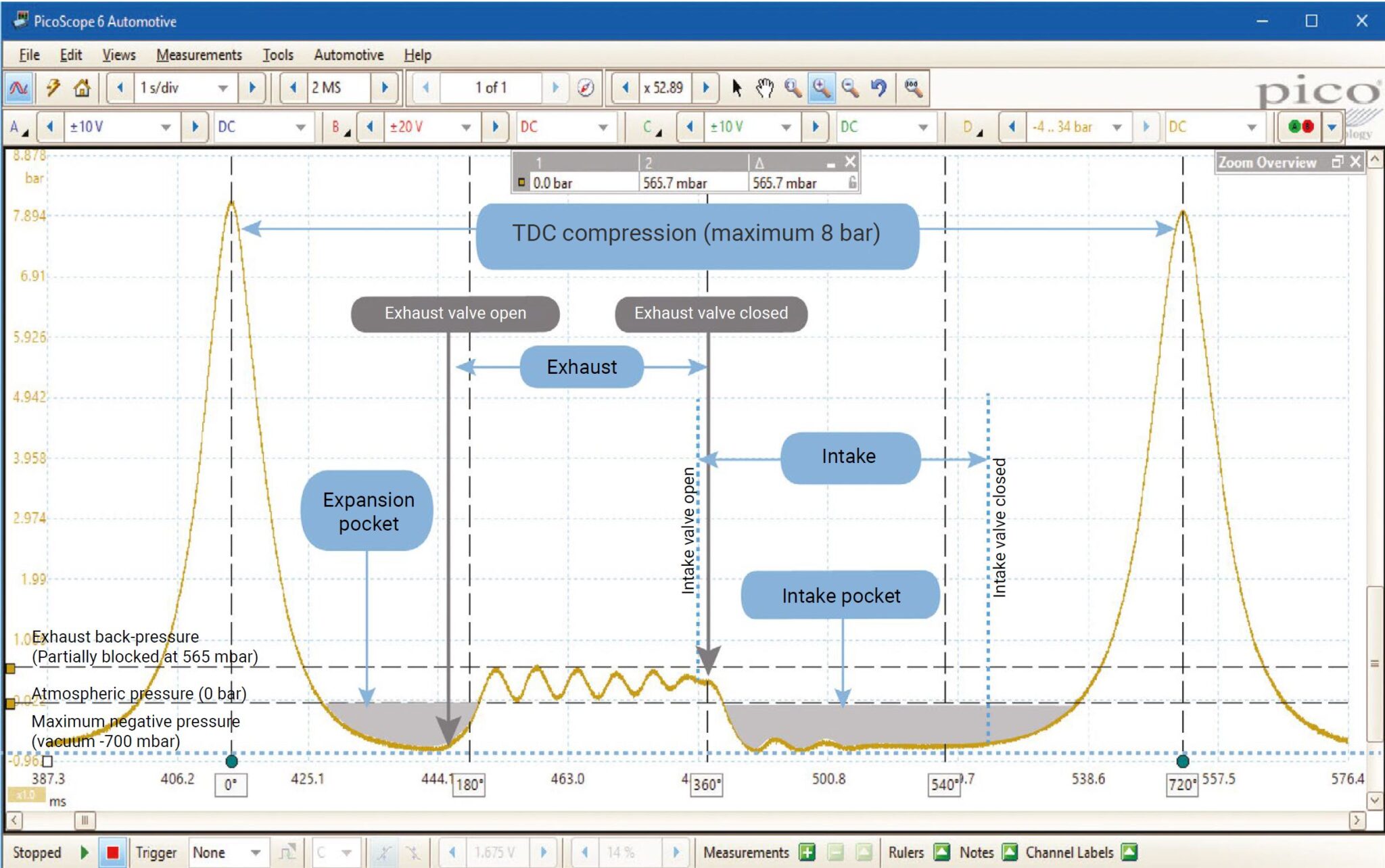Top-10 Test 10: WPS500X Absolute Compression Testing
Test 10: WPS500X Absolute Compression
The purpose of this test is to evaluate the in-cylinder pressures of a petrol engine during cranking, using the PICO-PP652 WPS500X Pressure Transducer.

How to perform the test
- Disable the fuel injection and ignition systems;
- Connect the fully charged WPS500X pressure transducer to Channel A of the PicoScope;
- With the WPS500X open to atmospheric pressure, switch it on and wait for the self-test to complete (The LEDs will scroll from range 1 to 3 and reset to 1);
- Remove the spark plug;
- Assemble the compression hose with an appropriate adapter. Compare the adapter to the spark plug to ensure that it is the same thread and length. Do not use an adapter with a thread that is longer than the spark plug's thread;
- Screw the adapter in place of the spark plug;
- Connect the WPS500X to the compression hose;
- Set up the PicoScope using the guided test:
- In PicoScope 7, click Guided Tests;
- Click the blue Pressure Sensors Icon;
- Choose WPS500X pressure transducer;
- Click on In-cylinder pressure (cranking);
- Click the Guide and Settings File Button;
- The PicoScope will be set up for you with a sample waveform and a guide will be displayed.
- Start the scope to see live data;
- With the throttle fully open (to prevent constriction of the inlet flow), crank the engine until the waveform stabilises (usually about 5 seconds);
- With your waveform on the screen, stop the scope;
- Use the Waveform Buffer, Zoom and Measurements to examine your waveform.

In-cylinder Analysis
Steve explains in-cylinder analysis with the WPS500X. The animation shows the connections and system operation and includes a fault example.
Running time: 7 min 25 sec.
Diagnosing a Misfire
In this video, a new PicoScope 4425A Advanced Kit is unpacked and then applied to solve a misfire problem on a GMC Yukon Hybrid. Ignition was suspected and tested using the 4425A.
Eventually, the PICO-PP652 WPS500X Pressure Sensor came to the rescue by graphing inlet manifold pressure. Anomalies in the inlet manifold pressure, comprehensively explained in the video, led to an in-cylinder pressure test that confirmed the problem. As this video was made some time ago when the 4425A was released, the video was made using the old PicoScope 6 software.
If you want to skip the unboxing, go forward about 13 minutes to watch the diagnostic procedure. The pressure sensor analysis where the cause of the fault (misfire on cylinder 6) was diagnosed, starts at about 26 minutes.
We hope you enjoyed this presentation. Our Demo Mode Course will introduce PicoScope 7 and teach you the basics of how to use the software, as well as the scope's features and capabilities — no PicoScope required!




